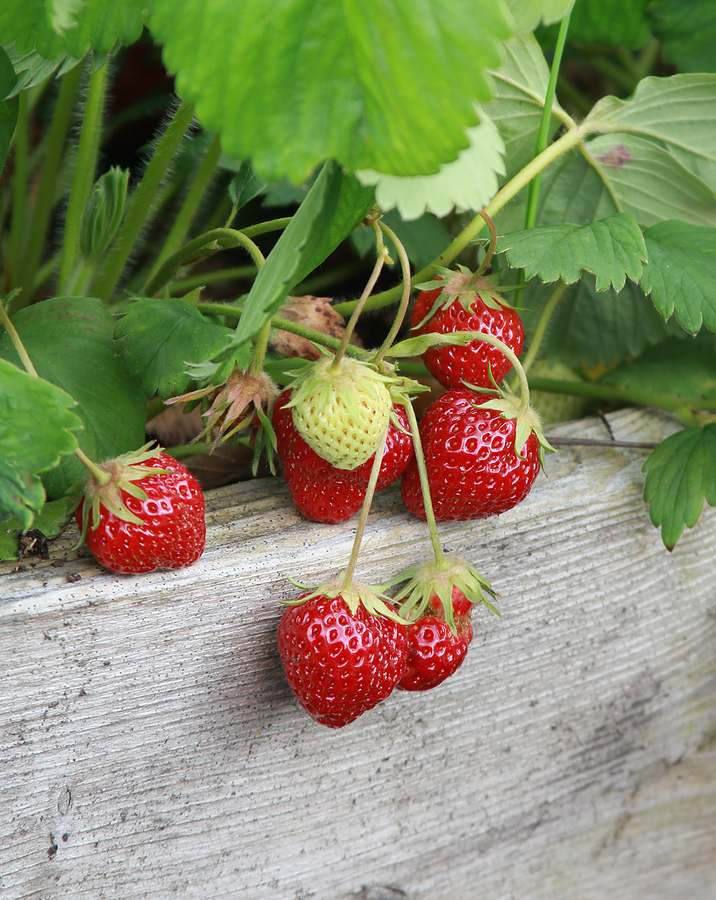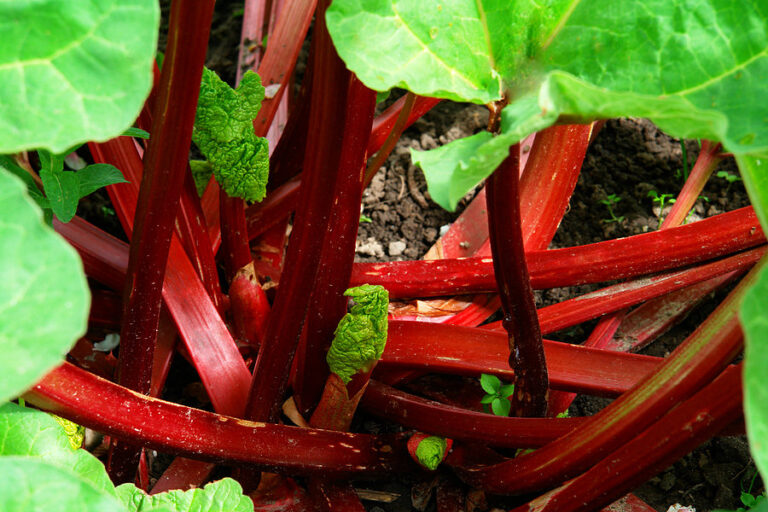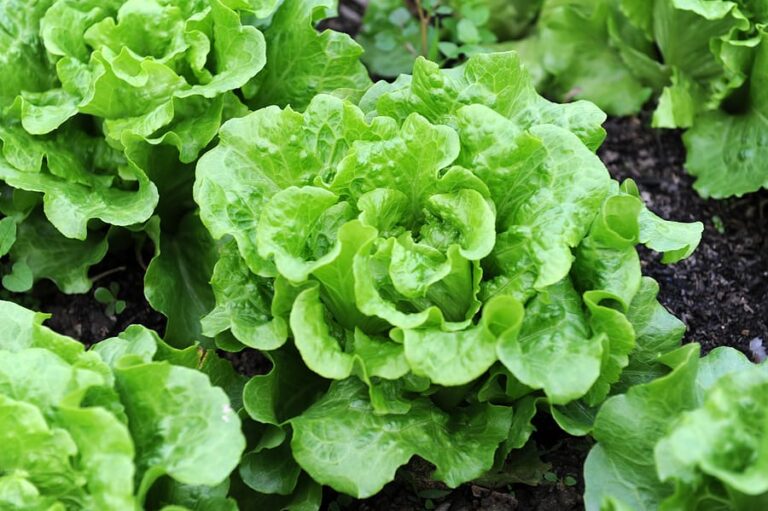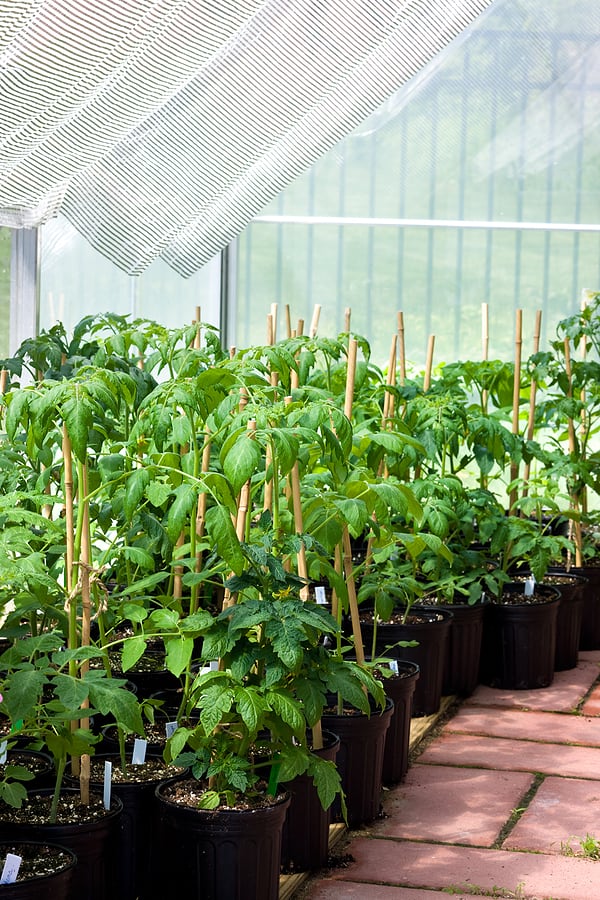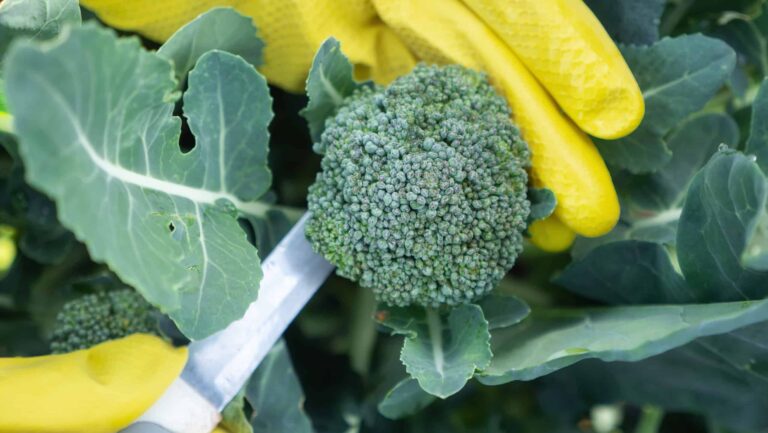How to Harvest and Store Cauliflower
Cauliflower is ready to harvest 70 to 90 days after sowing seed.
Plant cauliflower so it comes to harvest in a cool part of the year; the optimal growing temperatures for cauliflower are the mid 60°sF (15°+C).
Plant cauliflower in early spring for harvest before summer heat or plant in late summer for fall harvest. In mild-winter regions, plant in the fall for spring harvest.
Related articles:
- Seven Easy Ways to Serve Cauliflower
- Cauliflower Seed Starting Tips
- How to Harvest and Store Cauliflower
- Cauliflower Growing Problem Troubleshooting

When to harvest cauliflower
- Harvest cauliflower when heads are 6 to 8 inches (15-20 cm) in diameter but still compact and smooth.
- The cauliflower head is a collection of flower buds; harvest the head while it is white and before the yellow buds start to open. Cauliflower loses its flavor and texture when the buds loosen.
- When curds begin to loosen, separate, and open, harvest immediately. When curds fully loosen, the head is called “ricey” and is not good for eating.
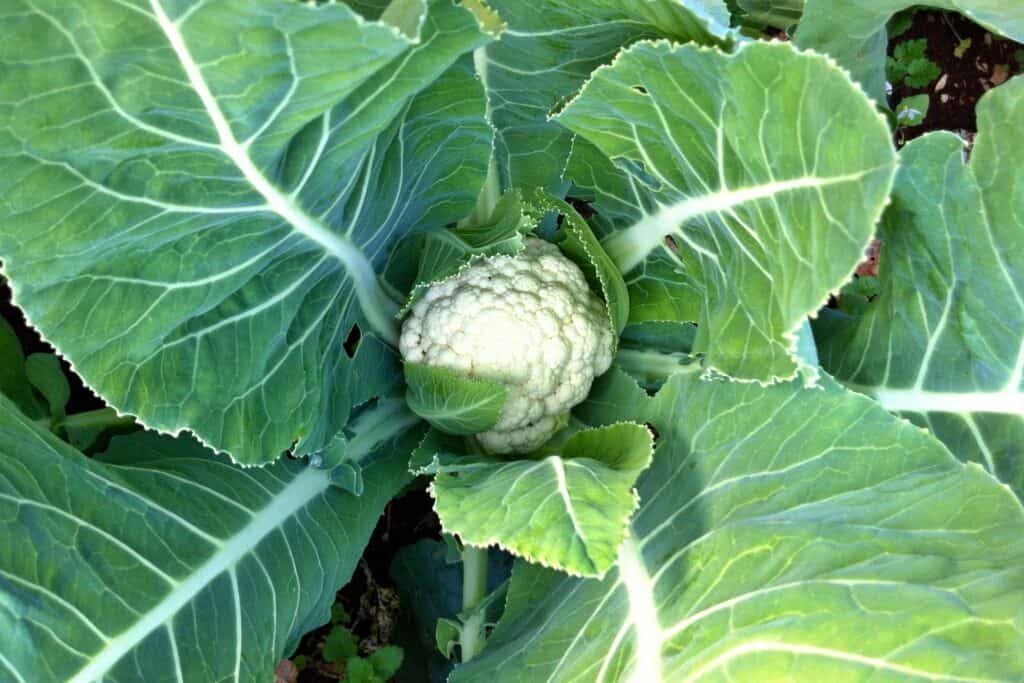
Blanching cauliflower before harvest
- When heads are 2 to 3 inches (5-7 cm) in diameter—about the size of an egg, lift the outer leaves up over the head and tie them together with a piece of twine; this will blanch the head—ensuring that it is white at harvest. When heads are blanched pure white they are ready for harvest.
- From the time you tie the leaves and begin the blanching process, cauliflower heads (also called “curds” and “buttons”) will be ready for harvest in about 4 days if the weather is warm and about 10 days if the weather is cool.
- Check heads daily to make sure they are smooth, tight, and hard.
- Let the heads continue to grow as long as they stay compact; an ideal head will be 6 to 8 inches (15-20 cm) across.
How to harvest cauliflower
- Cut heads with a sharp knife leaving about 3 inches of stem to keep the florets intact. Keep enough wrapper leaves also intact to hold the head together.
- A cauliflower plant produces one head and then it is done.
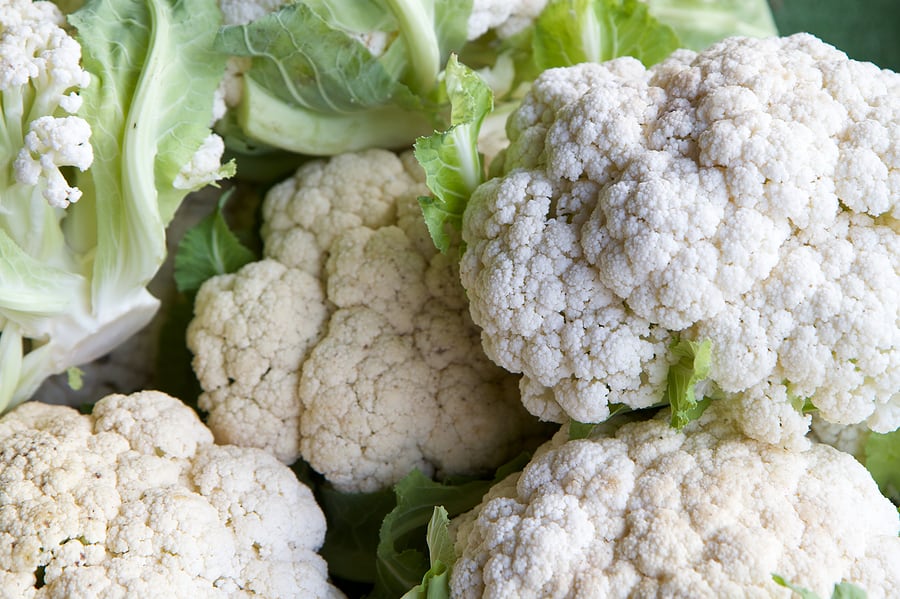
How to store cauliflower
Store cauliflower in a cold and moist place, 32°-40°F (0°-4°C) and 95 percent relative humidity. Cold and moist storage can be a challenge. Refrigerators provide the cold, but they also dry the air.
- Wrap unwashed cauliflower in a damp cloth or paper towel and put it in a perforated plastic bag in the vegetable crisper drawer of the refrigerator; this will maintain humidity.
- Cauliflower will keep in the refrigerator for two to four weeks.
- Stored cauliflower gives off a strong odor. As an alternative to keeping cauliflower in the refrigerator, you can store it in a cold location—at just above 32°F (0°C)—such as a root cellar, basement, shed, or garage.
- Cauliflower stored below 32°F will discolor and the stem will become hollow. Cauliflower stored at low humidity levels will turn brown.
- Cauliflower can be frozen shortly after harvest. Break the head into 1-inch chunks and soak them for 30 minutes in a gallon of water with a tablespoon of salt added (to kill any insects), blanch for 3 minutes, rinse, drain, and then freeze.
Cauliflower Learning Hub
Start here: The Ultimate Cauliflower Growing Guide: From Seed to Harvest
🌱 Planting & Growing
- When and How to Plant Cauliflower for Best Results
- Cauliflower Seed Starting Tips
- Cauliflower Planting Calendar: Month-by-Month Guide
- How to Transplant Cauliflower Seedlings Successfully
- Proper Cauliflower Spacing for Bigger Heads
- Growing Cauliflower in Containers: Step-by-Step Guide
- Best Companion Plants for Cauliflower (and What to Avoid)
💧 Care & Maintenance
- How to Water Cauliflower the Right Way
- Feeding Cauliflower: Fertilizer Tips for Healthy Growth
- Essential Cauliflower Care: From Seedling to Harvest
- Blanching Cauliflower: Why and How to Do It
🐛 Pests & Problems
🌾 Harvest & Storage
🍴 Kitchen & Use
❓ What to Grow
Cauliflower articles at Harvest to Table:
How to Plant and Grow Cauliflower
Cauliflower Seed Starting Tips
How to Harvest and Store Cauliflower
Cauliflower Growing Problem: Troubleshooting
Seven Easy Ways to Serve Cauliflower
Garden Planning Books at Amazon:
- Vegetable Garden Almanac & Planner
- Kitchen Garden Grower’s Guide Vegetable Encyclopedia
- Vegetable Garden Grower’s Guide
- Tomato Grower’s Answer Book
More harvest tips for these crops:
Learn when and how to harvest your favorite vegetables for the best flavor and texture. Get storage tips for each crop. Click on the vegetable you are growing below.
- Artichoke
- Arugula
- Asparagus
- Beans
- Beets
- Broccoli
- Brussels Sprouts
- Cabbage
- Cantaloupe — Melons
- Carrots
- Cauliflower
- Celery
- Chard
- Collards
- Corn, Sweet
- Cucumbers
- Eggplant
- Endive and Escarole
- Garlic
- Jerusalem Artichoke
- Kale
- Kohlrabi
- Leeks
- Lettuce
- Melons
- Okra
- Onions
- Parsnips
- Peas
- Peppers
- Potatoes
- Pumpkins
- Radicchio
- Rhubarb
- Rutabaga
- Spinach
- Squash, Summer
- Squash, Winter
- Sunchokes
- Sweet Potato
- Swiss Chard
- Tomatillo
- Tomatoes
- Turnips
- Watermelon


